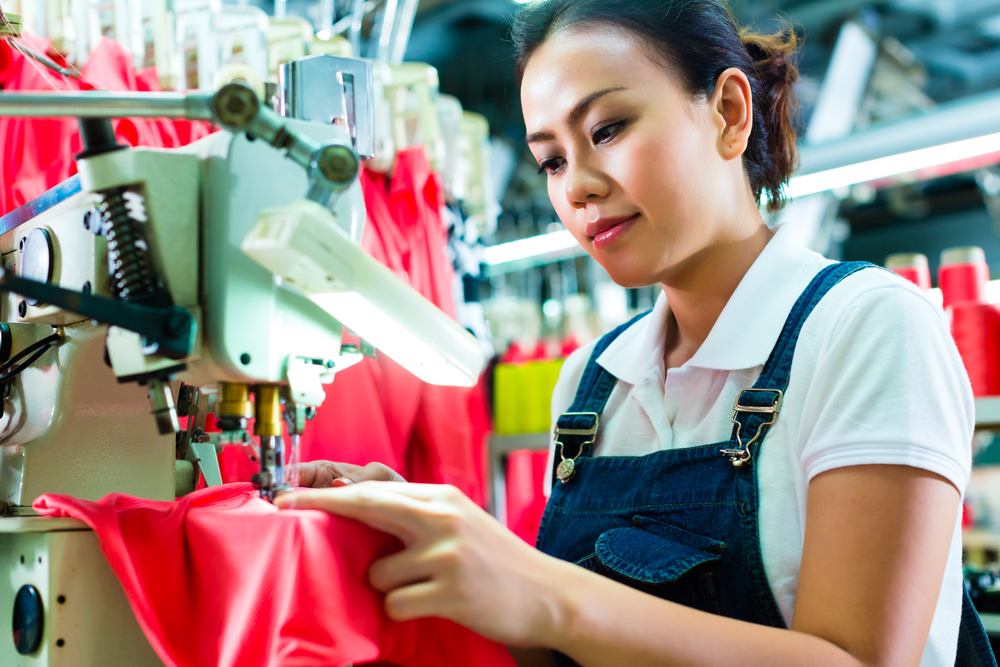
Dear all,
Below is my last article of 2016 published on my blog Modaes.es.
In this article, I discuss the current situation of the textile sector and the most distinctive aspects of the fashion industry, in which we have dabbled with our analyses.
The year 2016 was wonderful and I am sure this new year 2017 will be even more wonderful.
This is my wish for all of you! Thank you for being there!
Textile supply, present and future.
At this time of the year, I have considered convenient to make a brief summary of the issues we have been analyzing and I that I have shared in this special and gratifying space on Modaes.es.
I am doing this because I think that none of them has lost transcendence, because they keep being really important to the current textile industry and because they will surely trace some of the objectives to be accomplished in this new year 2017.
When it comes to textile supply, speed is the objective and logistics is the key element.
The big distribution chains and fashion labels have logically been trying to reorganize their supply chain during 2016. A common objective that has been observed in most of the companies is that they have considered a series of options in order to improve their strategies in their supply chain which turned out to be concurrent.
A large part of them has sought to get supplies from a new source. In addition, another group has sought to diversify their traditional supply base. It goes without saying that all of them were trying to improve the efficiency of manufacturing and to reduce their costs.
From all the buyers that have sought to get supplies from a new market, most of them have continued getting supplies from Asia. Obviously, because there are better opportunities to find prices that are lower than in other markers. The main prospective suppliers were China, Vietnam, India and Bangladesh.
Speed is still trending .
Due to the success of the companies which are recognized worldwide in the textile industry, most fashion brands are trying to adopt a model of fast fashion chain supply. This is confirmed by the increased nearshoring to the detriment of production in Asia. This clearly indicates that speed to market is being strategically prioritized instead of profit margin.
Technology, communication and means of transport.
Optimizing schedules and breaking the traditionally established rhythm in the conservative textile industry that launches two seasons per year has been possible because of that added value in the chain supply.
This has been accomplished through deep analysis of the commercial information, improving the speed of response of the design and purchase areas, optimally positioning productions to increase the volume of products, accelerating the production schedule and optimizing the means of transport, distribution and delivery of products.
To sum up, it implies increasing speed and productivity, shortening the processes of each area to the minimum and, at the same time, being more efficient in order to be able to reduce costs.
Part of this has been gradually accomplished because of the improvements in communication, in means of transport and, of course, because of the progressive technological development. However, one of the main aspects that generated this process in textile industry has been the implementation of improvement systems such as Just in Time, Lean Manufacturing and Kaizen.
Apart from the fact that all the main fashion chains have a particular approach –some of them prefer to produce large volumes and others prefer innovation of materials or the ability to respond—all the leading brands in the sector have altered the traditional rhythm of the industry with a globalized, versatile and extremely fast supply. All these textile companies have become more sophisticated and have improved the efficiency of their supply chain through some of these improvement systems.
Logistics is the key element of success.
If speed is the prevailing strategy, the key element of success in fashion is logistics.
Nowadays, the most successful global companies of the textile sector are without a doubt an excellent combination of adequate commercial and supply strategies and an extremely efficient logistics system.
In the logistics sector, the consolidation is not just a trend, it’s inevitable. From this aspect, it is understood that it will be easier to send goods and that they will even be able to do it faster, but it may entail bigger costs –and, in my personal opinion, it surely will.
A transcendental and possible challenge.
The challenge ahead of us is easy to imagine. In order to work faster, we must have efficient, vertical, nearshore suppliers and an excellent logistics system that does not make us lose the time we gained in the production process.
Good news is that nowadays both goals are perfectly possible in the textile supply.
Would it be possible to reduce current costs?
Future cost reduction will mainly come from automation and robotics applied to production and logistics.
China’s versatility and concern.
This new position of western buying companies along with the increase in production costs and the new policy on foreign trade that may be introduced by Donald Trump in the United States are raising concern in the other end, the Chinese suppliers. In general, they are pessimistic about the future of the textile industry in their country and emphasize that the salary raise is the main factor of their loss of competitiveness.
However, in a boast of their versatility and their entrepreneur abilities, the Chinese businessmen are expanding their investments outside their country, developing new production structures in neighboring Asian countries. With this new plan, Chinese companies are trying to continue being competitive on a global level. Certainly, this process of relocation of production generates an extremely beneficial situation for the neighboring developing Asian nations.
Questions and answers regarding sourcing.
However, despite general trends, the aspects that will condition the selection of a place of origin for manufacturing will be the particular characteristics of the product, the number of items of each style to be produced, the production time and the purchase price.
For this reason, when the supply strategy of a fashion company is in line with all these variables (type of product, raw materials, purchase price, purchase quantity, production time), possible sources for their production automatically come to light. To this typical process of textile sourcing, we should add the analysis of the company’s marketing strategy in order to define the exact sources of future productions.
Supply with value and responsibility
responsible and sustainable textile industry is the path to create value at source and, consequently, in the product and in the brand itself. The brand values, the reasons why the consumer chooses it, are those the staff responsible for sourcing must create and encourage throughouot the supply chain.
Responsible textile production.
The sustainable textile production and its final result, a transparent, environmentally friendly product from the source, are becoming a core value of the company strategies within textile industries.
The new generations of conscious consumers demand a product manufactured in a sustainable way and the textile sector is acting upon it in a substantiated and transparent way. The current growth and future relevance of a textile label depend –increasingly– on the ability of the company to meet new demands of the current purchase trend.
In this context and considering the challenges, there is no place left for it to be taken just as a marketing initiative. Sustainability is a guiding principle that demands action and specific processes through which a company makes strategic decisions to approach a situation and generate a responsible and sustainable product. Through this product, the company justifies its permanence in the market, its development and its future success.
Conscious consumers.
What the “new generation of conscious consumers” perceives when they enter a store and head to the shelves where garments are displayed is more than clothes. Each item is a guarantee and proof of what the company and its brand have generated to become a positive change force for the local communities that contribute to their success and what they have done to preserve the planet we live in.
Access to information, created by an exponential technological advance, is unprecedented and, as a result, each individual is increasingly aware of how our actions impact the environment, both positively and negatively. Our planet’s resources are not infinite and recycling on a global scale, for instance, is not a question of prestige or marketing, it is actually an imperative and urgent need.
The acceptance of diversity and the importance of inclusion have become the cornerstones of corporate strategy and of how textile brands do business abroad promoting an environment of safe, socially-conscious practices.
A responsible and sustainable supply chain leads textile brands to their own success and to the success of the planet we live in.
From the market and along with conscious consumers, it becomes increasingly clear that the fashion labels’ investments in sustainable and organic products are an intelligent strategy that will also result in long-term benefits for all the parties involved.
Transparent, controlled supply chain.
Textile industries find that designing their own supply chain model enables them to have control over the whole supply process, reducing the costs for consumers without affecting quality and ethics.
The current strategy that every textile company and every fashion brand defines regarding this aspect will be its voice. Words pronounced will start building the brand history and image and they will be their legacy for future generations –who will also be future consumers. These last two elements have become tremendously important for the costumers when they shop and they are becoming main factors of their loyalty to a certain brand.
Creating such value is our responsibility.
Thank you Modaes.es for a 2016 in which we have achieved our wishes and goals!
Happy and successful 2017 to everyone!















































